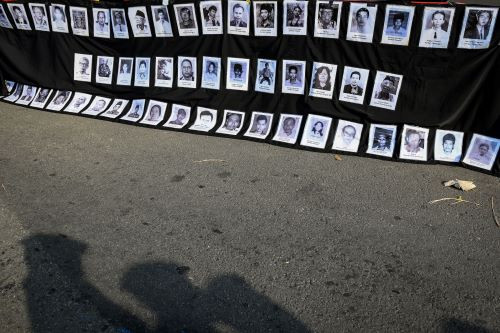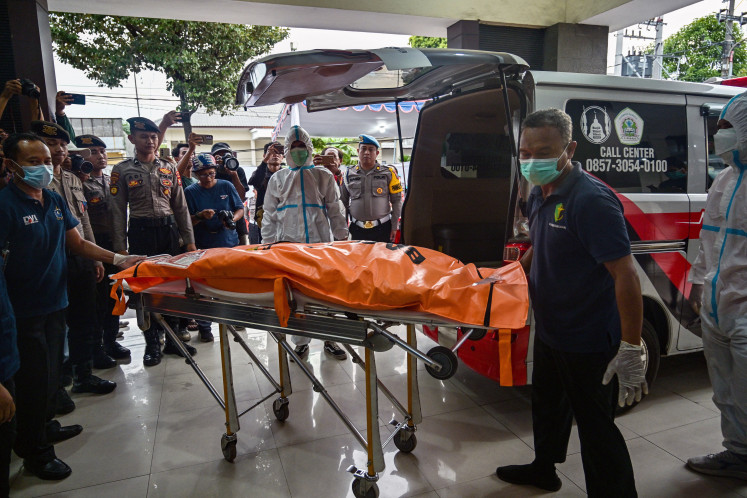Popular Reads
Top Results
Can't find what you're looking for?
View all search resultsPopular Reads
Top Results
Can't find what you're looking for?
View all search resultsOdd-even policy working, decreasing traffic jams
Twenty-six days after the official implementation of the odd-even license plate policy, a city official is hailing the regulation for bringing positive results, decreasing traffic jams, especially in the city’s main avenues
Change text size
Gift Premium Articles
to Anyone
T
wenty-six days after the official implementation of the odd-even license plate policy, a city official is hailing the regulation for bringing positive results, decreasing traffic jams, especially in the city’s main avenues.
According to data released by the Jakarta Police, 26 days after the regulation was officially implemented, travel time within the city has decreased and vehicles can travel at faster speeds.
Moreover, the volume of vehicles has decreased as more private vehicle drivers choose to travel on Transjakarta buses.
During the period, 3,145 motorists were ticketed for violating the regulation. They gave various excuses, from forgetting the dates to intentionally finding shortcuts.
“We have conducted surveys three times with several independent institutions,” said the head of law enforcement at the Jakarta Police traffic unit, Adj. Sr. Comr. Budiyanto, on Thursday, without naming the institutions.
A survey conducted on Sept. 22 indicated that travel time decreased by 2 percent as vehicle speeds increased also by 2 percent.
However, with the data, Budiyanto admitted that because of the regulation, the congestion on alternative roads had increased by 13 percent.
Budiyanto, however, could not be reached for comment on how the police measured the data.
Nonetheless, previously city officials said that Jakarta’s Transportation Agency and the police were in charge of observing and supervising traffic during the implementation of the odd-even policy at 15 monitoring spots within nine intersections.
Aiming to control vehicle numbers to reduce congestion, the Jakarta administration has replaced a three-in-one traffic policy that required cars to travel with a minimum of three people on board on certain streets during certain hours, with this odd-even regulation.
The new policy, however, is only to be imposed on the capital’s main thoroughfares in Central and South Jakarta, which are Jl. Sudirman, Jl. MH Thamrin, Jl. Sisingamangaraja, Jl. Gatot Subroto and Jl. Medan Merdeka Barat, until the city implements an electronic road pricing (ERP) system in 2018.
Like the three-in-one regulation, the odd-even policy will only be applied on weekdays during the rush hours, from 7 a.m. to 10 a.m. and from 4 p.m. to 8 p.m.
Because of the regulation, however, taxi driver Syafruddin Lubis, 60, said the capital’s notorious traffic jams have now shifted to uncommon hours.
Before the odd-even policy was applied, he said, traffic got congested mostly during the busy morning and evening hours, between 7 a.m. and 10 p.m. and between 4:30 p.m. and 7:30 p.m.
However, he said the streets now also get congested in the early mornings and late evenings.
“I guess many people try to avoid the odd-even plate policy by going to work early in the morning and going home late. I was surprised when for the first time I met a traffic jam at about 5:30 a.m.,” said Syafruddin, who drives his cab daily around the city’s major roads to find passengers.
The congestion, he explained, is mostly found on major roads connecting the city to its suburbs, like Jl. Sudirman and Jl. Gatot Subroto.
“Well, the odd-even policy indeed has made slight progress in reducing congestion during busy hours, but only on particular streets located in the center of the city, like Jl. MH Thamrin and Jl. Medan Merdeka Barat,” Syafruddin said.
They used to be heavily congested with stop-and-go traffic in such hours, but with the regulation vehicles still pack the streets, but they are able to constantly move.
“I observed that also because of the policy, heavy congestion moved to alternative routes, like Jl. Jatibaru in Tanah Abang,” he added.










